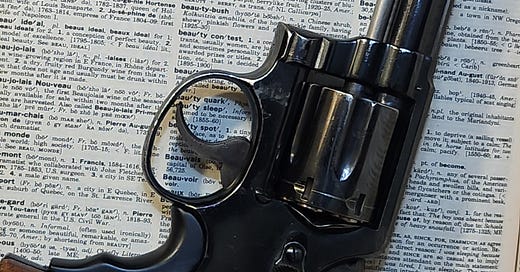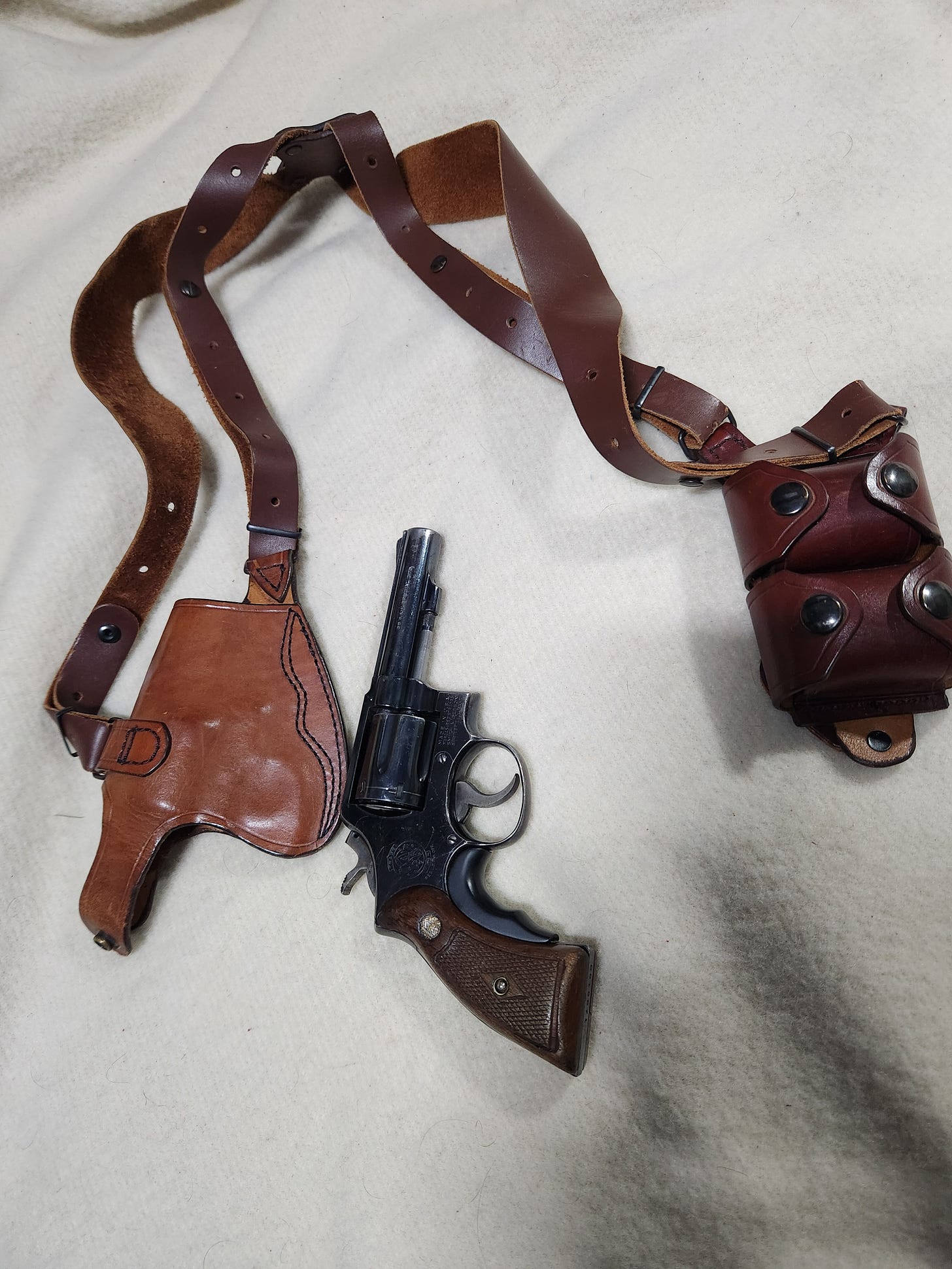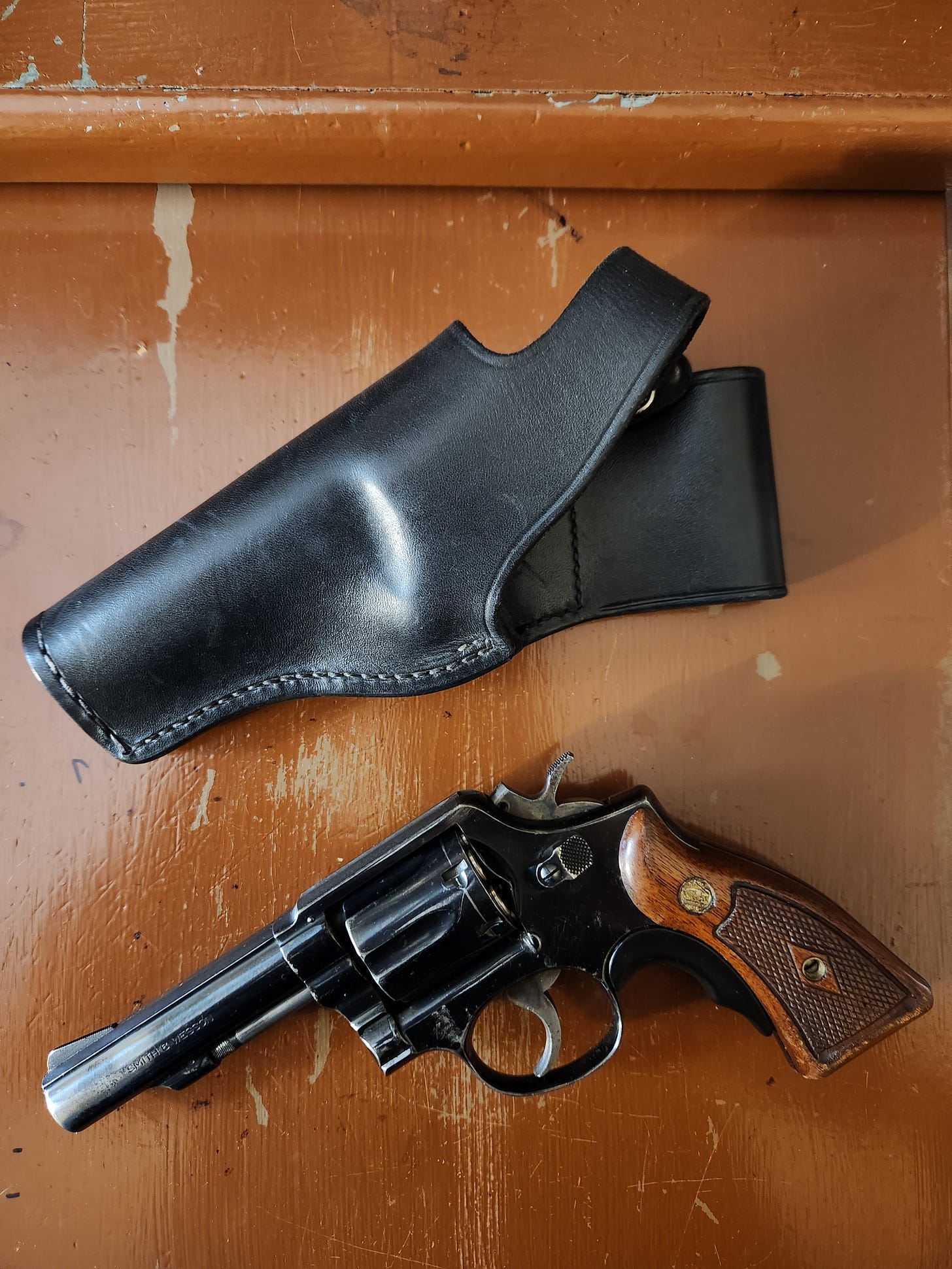Model 10
If you read last week's Tale of A Gun, you know about my first handgun, (and first carry gun,) a S&W Model 14. You probably also know that a big target gun like that, six inch heavy barrel, oversized grips, tall sights and the rest, is not exactly the ideal choice for CCW. More than that, every time I noticed a new spot of holster wear start on the previously immaculate 40 year old factory bluing, I felt like the kid who put a baseball through the rose window at the cathedral.
I started saving my pennies, and eventually went to the local gun show. This was the turn of the millenium. The tail-end of the Great Switcheroo, when police turned in their tried and true wheel guns in droves, to switch to 3rd Gen S&W Autos, Sig-Sauers, and some plastic contraption from Austria.
My plan had been to look for a snubby. A J-frame, or something similar. Unfortunately, they were all well beyond my meager budget. What I could afford, however, was one of the tables and tables of police trade service revolvers. Nobody wanted such out-dated equipment. They sat, lost and forlorn. And cheap. As you can see, it is slightly smaller than the Model 14, but a snubby it isn’t.
For a mere $125, I came away with that most ubiquitous of police pistols, an S&W Model 10. Its direct precursor, the Smith & Wesson Military and Police, (not to be confused with the plastic pistol which bears that moniker today,) was introduced in 1899, and set the standard design of the double action, swing-out cylinder revolver for the next century and more. When S&W went to the numbering scheme in the mid-fifties, the M&P became the Model 10.
Very little changed from 1899 until my example was built in 1972. Older ones tended to sport five and six inch tapered barrels, but when the beat cop moved into the patrol car they found that the long barrel was uncomfortable to sit on. The result was that the shorter, heavy barrel predominated for the latter part of the revolver's career in law enforcement. Supposedly it balanced the same as the traditional longer, skinnier version.
That's what mine is. Six rounds of .38 Special with a four inch heavy barrel, (which has never been screwed on quite straight,) fixed sights, square butt, and Magna grips.
That same day, I found an Aker Gunleather shoulder holster and some used HKS speedloaders, still in a basketweave leather carrier straight from some policeman's duty belt.
It's a sweet shooter. I've been meaning to get the barrel straightened for about 25 years, but never quite gotten to it. As a result, its always grouped slightly to the right. But thirty-four ounces of steel tame the .38 (never a famous fire breather,) nicely and the trigger is phenomenal in both double and single action modes. A real testament to the folks at S&W in those days.
Aesthetically, its a completely different animal from the 14. Whereas that gun is a marvel of good preservation, this one rode a cop's hip for many years and the mileage shows. There's a lot of bluing missing in several places, together with dings and dents. When I first got it, someone had tried to bend the front sight with pliers to get it shooting straighter, but there's not really enough sight on these to bend.
After years of 1911s, I'm presently back to revolvers, and this old warhorse has become my primary carry again. (Not in that blasted shoulder rig, though. I'm pretty sure those were invented by chiropractors to drum up business.)
The extremes I went to in trying to avoid that pain in the back is another Tale of A Gun. Tune back next week!








I love wheel guns! And the model 10 is one of the standards!
There must be a heck of a story in that firearm, Jesse.
"Sarge, this gun shoots crooked."
"That's just you, Murph. You couldn't—" *sights down the barrel and frowns*
"Told you, Sarge."
"Shut up, Murph, or I'll make you drive car 354."
"Let's go, Jenkins!" Murph snatches a pair of keys out of the lock box and zips out of the squad room. "We've got car 238!"
Jenkins grabs his gear and tries to keep up with Murph.
😁